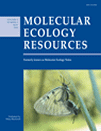 Authors: Graham CF, Glenn TC, McArthur AG, Boreham DR, Kieran T, Lance S, Manzon RG, Martino JA, Pierson T, Rogers SM, Wilson JY, Somers CM. Mol Ecol Resour. 2015 Nov;15(6):1304-15.
Authors: Graham CF, Glenn TC, McArthur AG, Boreham DR, Kieran T, Lance S, Manzon RG, Martino JA, Pierson T, Rogers SM, Wilson JY, Somers CM. Mol Ecol Resour. 2015 Nov;15(6):1304-15.
Degraded DNA from suboptimal field sampling is common in molecular ecology. However, its impact on techniques that use restriction site associated next-generation DNA sequencing (RADSeq, GBS) is unknown. We experimentally examined the effects of in situ DNA degradation on data generation for a modified double-digest RADSeq approach (3RAD). We generated libraries using genomic DNA serially extracted from the muscle tissue of 8 individual lake whitefish (Coregonus clupeaformis) following 0-, 12-, 48- and 96-h incubation at room temperature posteuthanasia. This treatment of the tissue resulted in input DNA that ranged in quality from nearly intact to highly sheared. All samples were sequenced as a multiplexed pool on an Illumina MiSeq. Libraries created from low to moderately degraded DNA (12-48 h) performed well. In contrast, the number of RADtags per individual, number of variable sites, and percentage of identical RADtags retained were all dramatically reduced when libraries were made using highly degraded DNA (96-h group). This reduction in performance was largely due to a significant and unexpected loss of raw reads as a result of poor quality scores. Our findings remained consistent after changes in restriction enzymes, modified fold coverage values (2- to 16-fold), and additional read-length trimming. We conclude that starting DNA quality is an important consideration for RADSeq; however, the approach remains robust until genomic DNA is extensively degraded.

